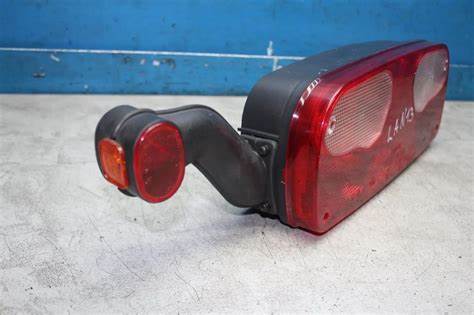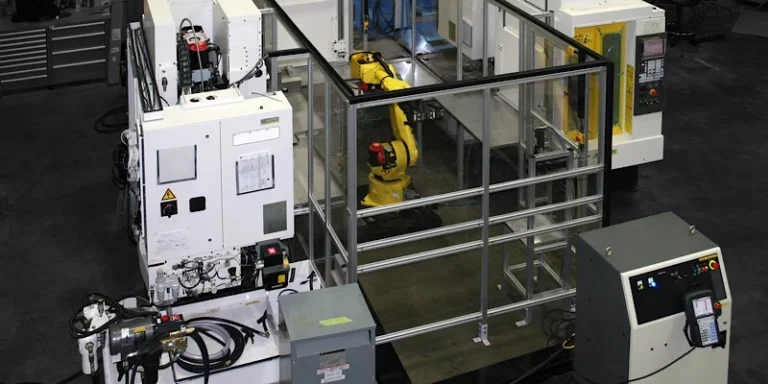Automobile design is often considered one of the most challenging fields in modern industry. Each year, new models are introduced, and the development time for these models must continually shorten to meet market demands. To evaluate the performance and interaction of every component in a car, multiple prototypes must be created at various stages of the development process. Automobile lamps are crucial for signaling other drivers about the car’s intentions and for illuminating the road at night. Rear lights primarily serve the purpose of signaling, while front lights are used for illumination. Consequently, the reliability of rear lighting is a critical requirement for any vehicle. Let’s explore how a rear light prototype is developed in automotive design.
Rear Lighting Systems
Rear lights were initially developed at the beginning of the 20th century when the number of cars on the roads began to increase significantly. At that time, LED lights and even widespread electrical systems were not yet available, so the first rear light lamps were oil lamps. These early lights lacked turn signals and brake signals, which were introduced approximately 20 years later, around the time when electricity was first integrated into cars. Since then, rear lights have undergone a tremendous technological evolution. Today, modern rear lights are highly sophisticated systems that play a crucial role in both the performance and design of vehicles.

Engineering Prototypes
During the design and pre-production processes, numerous prototypes must be created to verify the product. In the initial stages of product development, both the functionality and the appearance of the product need to be validated. Thus, a prototype that partially represents the final product is manufactured.
For functional verification, the prototype for rear lights will likely resemble a collection of wires connected to some LED lamps, which can be switched on in the required sequence. For visual verification, the prototype will probably consist of just the lens of the lamps, representing the enclosure of the lamp and essentially how it will look on the car. At this stage, typically only one or two examples of the product are created.
This phase concludes with engineering verification tests, during which the rear lamps are assessed for brightness, functionality, and other basic performance parameters.
Design Validation Prototypes
Once the initial functionality of the product has been confirmed, the design verification stage begins. This stage focuses on optimizing the product’s geometry and checking the assembly for the first time. It is common for the initial assembly to encounter several issues that necessitate corrections. Once these imperfections are identified, they are addressed in the design, and the product prototype is re-manufactured to verify the updated design, as new problems may emerge from the corrections. This is an iterative process, typically involving the creation of no more than 20 prototypes.
The results of design verification tests include assessing the cosmetic and environmental attributes of the product. Additionally, strength tests are conducted at this stage. For rear lamps, these tests primarily involve impact assessments, where hard objects are thrown at the lens to evaluate its durability. Based on these tests, some materials may be altered to better meet the manufacturers’ requirements.
Production Validation Prototypes
This stage occurs after the manufacturing process has been developed. It is essentially the first attempt to produce the product as it would be manufactured in mass production. This means that all the expensive tooling must already be in place. One might wonder why the tooling would be manufactured if the product is not yet in mass production and what would happen if changes were needed, rendering the tooling obsolete.
The purpose of production validation is to optimize the manufacturing process. At this stage, the design is typically not altered, unless some unexpected and crucial mistakes are discovered. Such issues are rare because the manufacturability of the product is confirmed during the previous stages. This stage involves the production of up to 1,000 units to ensure that the manufacturing process is efficient and effective for mass production.
Methods For Rear Lamps Manufacturing
Different stages of light development typically employ various methods for manufacturing prototypes.
In the first stage, there are often the most iterations since the final design has not yet been established. Prototypes need to be remanufactured quickly and may differ significantly from one another. The ideal process for this stage is Additive Manufacturing, which allows for the creation of complex free-form parts without extensive production preparations. This process involves sintering plastic layer-by-layer according to the CAD model of the part.
In the second stage, a larger number of parts are required, making 3D printing less viable. Automotive lights are usually made of transparent plastic (such as polycarbonate or PMMA), which can be cast into urethane molds. These molds can be created much faster and cheaper than injection molds and are suitable for producing the smaller quantities needed at this stage.
The third stage of product verification is essentially a test for mass production. At this point, expensive steel injection molds are manufactured, and injection molding becomes the primary manufacturing process. To achieve good transparency and surface finish for the lamps, grinding machine tools and polishing methods are employed, making machine tools essential.
Conclusions
Rear lights are a crucial system in automotive design, serving to indicate the size of the car at night and to signal other drivers about the vehicle’s intentions. Consequently, the verification of automotive rear lights is a complex, multi-stage process.
The first stage of verification involves determining the basic functionality of a crude prototype. This ensures that the fundamental aspects of the rear light system are working as intended.
The second stage focuses on optimizing the design and verifying that all parts fit together correctly and that the entire lamp integrates properly into the car for which it is intended. This stage addresses the geometric and assembly aspects of the rear light.
The final stage of verification addresses the imperfections in the manufacturing process. This stage ensures that the product can be produced consistently and reliably on a larger scale.
Only after successfully passing all these verification stages can the rear light system be approved for use in an automobile.





